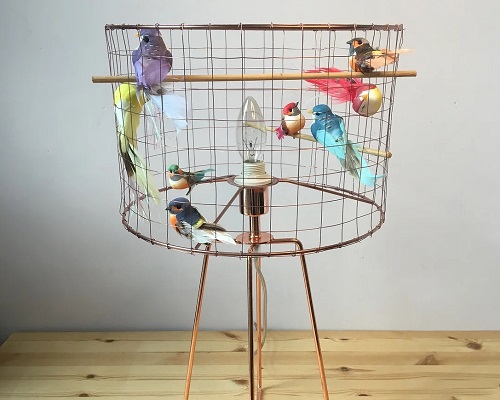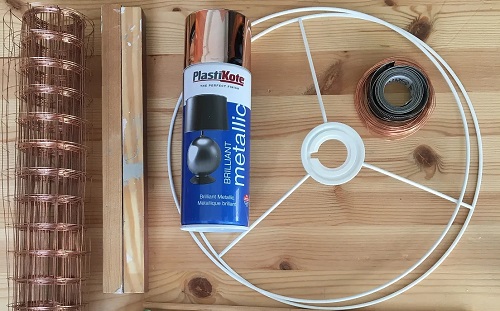Creating a bird cage that is both safe and comfortable for your feathered friend is an essential task for any bird owner. Knowing how to make a bird cage that meets these needs involves careful planning, selecting the right materials, and understanding the specific requirements of your bird species. A well-designed cage not only ensures the safety of the bird but also contributes to its overall well-being and happiness. In this guide, we will provide a step-by-step approach to building a bird cage that prioritizes your bird’s health and comfort. From selecting materials to the final touches, this comprehensive guide will help you create a home that your bird will love.

What Materials Are Best for a Bird Cage?
Selecting the right materials is crucial when learning how to make a bird cage. The materials used will directly impact the safety and longevity of the cage. For the cage frame, stainless steel is an excellent choice due to its durability, resistance to rust, and non-toxic nature. Avoid materials like lead or zinc, which can be harmful to birds if ingested. For the bars, opt for powder-coated metal to prevent rusting and make cleaning easier. When it comes to perches, untreated wood is ideal as it mimics the natural environment of birds. The base of the cage should be made of a non-toxic, easy-to-clean material like plastic or metal. Choosing the right materials ensures that the cage is safe, sturdy, and comfortable for your bird.

How to Design a Bird Cage for Safety and Comfort?
Proper Ventilation and Space
Ventilation is one of the most important aspects of a bird cage. Birds need fresh air to stay healthy, so the cage must have ample ventilation. The bars should be spaced correctly to allow air to circulate freely while keeping the bird secure inside. For small birds, bar spacing should be narrow enough to prevent them from squeezing through, while larger birds can have wider spacing. The cage should also provide enough space for the bird to move around, stretch its wings, and engage in natural behaviors like climbing and playing. The more space the bird has, the happier and healthier it will be.
Secure Door and Lock Mechanisms
A secure door and lock mechanism are essential for the safety of your bird. Birds are curious and intelligent creatures that can learn to open simple latches. Therefore, it’s important to use bird-proof locks that they cannot easily tamper with. The door should be positioned at a convenient height for you to access but away from perches to prevent the bird from reaching and fiddling with the lock. Additionally, consider adding secondary locks or latches as an extra precaution. A secure door not only keeps your bird safe inside the cage but also prevents other pets or children from accidentally opening it.
What Are the Steps to Build a Bird Cage at Home?
Step-by-Step Construction Process
Begin by gathering all the materials and tools you’ll need, including metal frames, bars, screws, and a bird-safe coating. Start by cutting the metal frames to the size required for your bird species. Assemble the frame by securely attaching the pieces with bird-safe screws. Next, install the bars, ensuring they are spaced appropriately to prevent the bird from escaping while allowing for proper ventilation. Attach the bars securely to the frame, making sure there are no sharp edges that could harm your bird. Once the frame and bars are in place, install the door with a secure locking mechanism. The final step in the construction process is to attach a removable tray at the bottom of the cage for easy cleaning.
Adding Perches, Toys, and Accessories
After the basic structure is complete, it’s time to personalize the cage with perches, toys, and other accessories. Perches should be made of natural, untreated wood and placed at varying heights to simulate a natural environment. This encourages exercise and keeps your bird engaged. Add bird-safe toys to stimulate your bird mentally and physically. Toys like swings, ladders, and bells can keep your bird entertained for hours. Don’t forget to install feeding and water stations in accessible locations. These should be placed away from perches to prevent contamination. Adding these elements not only makes the cage more comfortable but also helps to keep your bird happy and healthy.
Finishing Touches and Inspection
Before introducing your bird to its new home, conduct a thorough inspection of the cage. Check for any sharp edges or loose parts that could pose a risk to your bird. Ensure that all accessories, perches, and toys are securely attached and that the cage is stable and won’t tip over. Test the door and lock mechanism to make sure they work properly. Once you’re confident that the cage is safe and ready, place it in a location that is free from drafts and direct sunlight, as these can be harmful to birds. Performing a final inspection and adding any last-minute touches ensures that the cage is a safe and comfortable environment for your bird.
How to Maintain and Clean Your Bird Cage?
Maintaining a clean bird cage is essential for your bird’s health. Regular cleaning prevents the buildup of bacteria and keeps the bird’s environment fresh. Start by spot-cleaning the cage daily. This involves removing waste from the tray, wiping down bars, and replacing soiled paper or substrate. Once a week, perform a deep clean. Remove all accessories, perches, and toys, and scrub the entire cage with a bird-safe disinfectant. Rinse everything thoroughly to ensure no chemical residue remains. Replace the bedding, and wash and refill food and water dishes. Regular maintenance not only keeps the cage clean but also ensures a healthy and comfortable living environment for your bird.
Conclusion
Building a bird cage that is both safe and comfortable is a rewarding task that benefits both you and your bird. By following the steps outlined in this guide on how to make a bird cage, you can create a habitat that meets all your bird’s needs. From selecting the right materials to adding the final touches, each step is crucial in ensuring that your bird has a safe and comfortable place to live. Regular maintenance and thoughtful design will keep the cage in top condition, providing your bird with a happy and healthy home for years to come. Remember, the effort you put into making the cage directly impacts your bird’s quality of life, making it a worthwhile endeavor.
FAQ:
1.What size should a bird cage be for different bird species?
The size of a bird cage should be tailored to the specific needs of the bird species. Small birds like canaries and finches need cages that allow them to fly horizontally, so wider cages are better. Larger birds, such as parrots, require more vertical space for climbing and stretching their wings. Researching your bird’s natural behavior will help determine the ideal cage size.
2.How often should I clean my bird cage?
Bird cages should be spot-cleaned daily to remove waste, uneaten food, and soiled bedding. A thorough cleaning should be done once a week, including washing all accessories and scrubbing the bars with a bird-safe disinfectant. Regular cleaning keeps the cage hygienic and your bird healthy.
3.Can I use recycled materials to build a bird cage?
While it’s possible to use recycled materials, you must ensure that they are safe for birds. Avoid using materials that may have been treated with chemicals or that could be toxic if ingested. Always opt for materials that are bird-safe and non-toxic to prevent any potential health risks to your bird.
